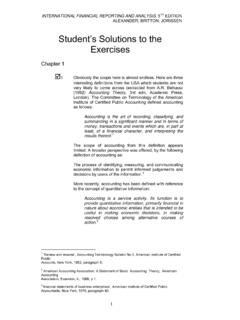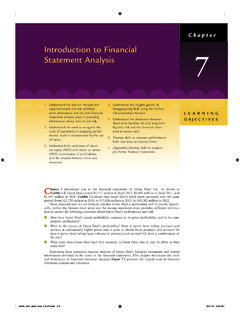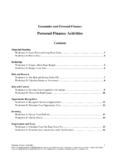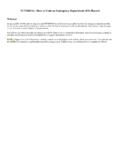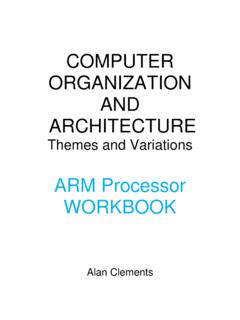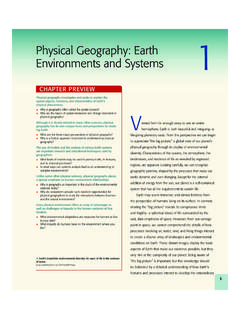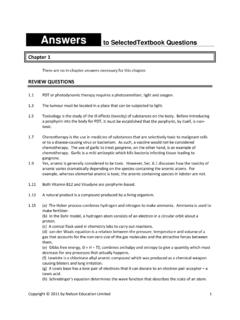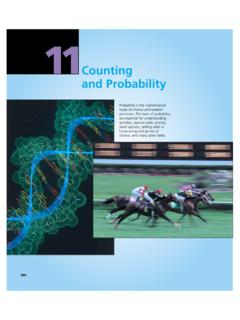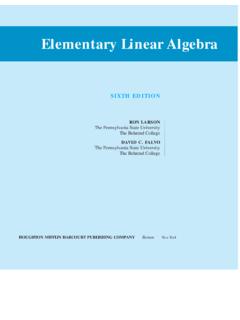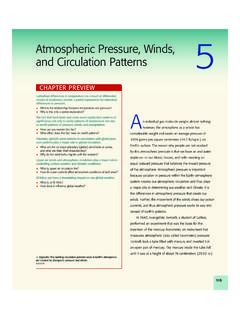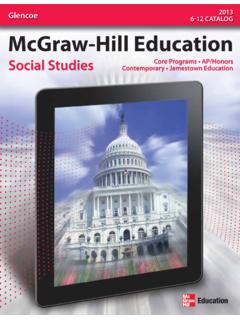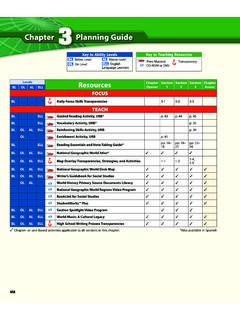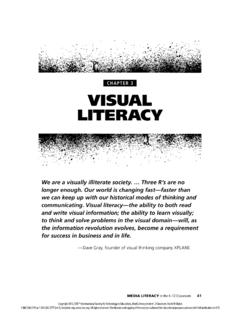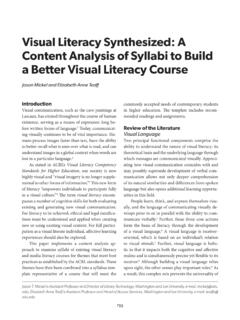Transcription of Chapter 6 Notes - Cengage
1 2010 Wadsworth, Cengage Learning Chapter 6 Notes I. Introduction a. Author divides language arts into four interrelated areas: i. Listening ii. Speaking iii. Writing iv. Reading b. visual literacy is a primary, basic human capacity closely related to the other language arts areas i. Increasing the child s understanding of how language arts combine and overlap in everyday preschool activities helps increase language use and literacy ii. Early childhood teachers realize that when children are taught to read or when a few children begin reading on their own before kindergarten, the learning of reading is dynamically concerned with the interrelatedness of the literacy skills of listening, speaking, and print (writing) iii.
2 Learning to read with ease happens more readily when young children listen, converse easily, think with and about words, and have rich vocabularies they have used to express their ideas c. Unified and balanced approach in which the teacher purposefully shows and stresses connections between areas is recommended i. Educators believe that separate, but integrated skill activities can be part of a balanced language arts program d. The ages of the children and their past life experiences will decide the literacy activities one plans and presents and the techniques and adult-child interaction one deems appropriate i.
3 Classes may include: 1. Children who have been in group settings for 3 or 4 years 2. Children with identified disabilities 3. Children with exceptional abilities 4. Children who are already independent readers 5. Children just beginning to acquire some basic literacy knowledge II. visual literacy a. Many researchers and experts in the early childhood literacy field believe a fifth language arts area exists visual literacy , or viewing i. Goals of instruction in the visual literacy area involve promoting young children s visual perception skills, including: 1. Attending behavior 2. Discrimination 3.
4 Identification 4. Analysis 5. Classification 6. Sorting 2010 Wadsworth, Cengage Learning 7. Categorization of visual images ii. A conscious noting of differences in visual characteristics would be undertaken 1. These characteristics include: a. Line b. Shape c. Color d. Number e. Texture f. Movement g. Dimension 2. This area of study can be referred to in professional readings as visual thinking, visual intelligence, visual awareness, visual sensitivity, and visual arts 3. Specifically relates to: a. A child s perception of the world b. How she reacts to viewed images c. How she sees, feels, and interprets emotions evoked d.
5 How she arrives at insights concerning visual media b. visual literacy , based on the idea that visual images are a language, is defined as the ability to understand and produce visual messages i. Believed useful in improving children s cognitive, reading, writing, and creative skills c. visual literacy is currently a field of educator research and study i. Has become increasingly important with young children s growing exposure to television, videos, video games, computers, and other mass media ii. Ability to think critically and visually about images is a crucial skill d. Stieglitz points out that the sense of sight is the most important and basic source of information concerning one s surroundings i.
6 Involves not only the eye but also the brain ii. Elements of the visual perception process are: 1. Light 2. The visual stimulus and its characteristics 3. Eye receptors 4. The individual s past experiences 5. Previous knowledge and ideas 6. The individual s purposes, interests, and feelings at a particular time e. Morrow and Asbury believe the visual literacy area should be integrated with writing, listening, reading, and speaking i. Also suggest using instruction that: 1. Is spontaneous 2010 Wadsworth, Cengage Learning 2. Is authentic 3. Involves children in problem solving ii. Also recommend instruction that is direct, explicit, and systematic f.
7 Telling stories using a photograph or drawing, eliciting the children s ideas about story content after viewing a picture book s cover, and discussing children s creative art and the details therein or the emotions they feel give teachers insights into what children are thinking i. These activities also reveal children s ability to read visual cues and symbols g. When children and adults are in the process of viewing an image or living an event, they are not involved in the process of critical analysis i. Instead, they are absorbing those images and events and actively seeking meaning 1. Accounts for children s barrage of questions if they are interested in a new classroom animal 2.
8 Also explains a good number of their other questions h. When children are encouraged to express their learning through the medium of graphic arts, they are documenting their understandings i. They are encouraged to do this in the Reggio Emilia approach ii. Children trace and revisit their discoveries and actions, making them visible i. The exercise is an instrument for reflection and language development as the children discuss their creations i. Reflection can lead to a refinement of ideas and further search and discovery 1. Can be likened to a scientist writing the results of her inquiry, which then leads to further questions j.
9 DeMarie believes that it is only through the process of repeated investigations using many different languages to represent their learning that these children begin to see the world differently and to attain higher levels of thinking about the topic k. Primary literacy of the twenty-first century will be visual i. Pictures, graphics, and images of every kind will be processed ii. Children need experience shifting from word to illustration and illustration to word iii. Observant teachers have always known that visual images help learners understand and remember complex information and abstract concepts III.
10 literacy Goals Skill and Knowledge a. literacy can be defined as demonstrated competence in communication skills which enables the individual to function, appropriate to age, independently of society and with a potential for movement in society 2010 Wadsworth, Cengage Learning b. literacy can be conceptualized as a relatively narrow domain of academic inquiry and educational practice i. Can alternately be viewed as an encompassing way of being that involves all forms of communication, including mathematical, scientific, and artistic forms ii. literacy definitions change and reflect different historical, cultural, and technological development 1.
